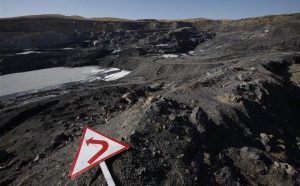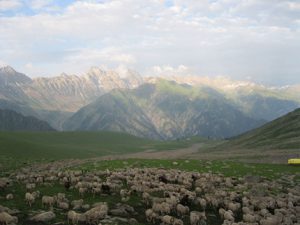China now accounts for half the world’s coal consumption and yet amazingly only became a net importer of coal less than five years ago – a testament to the size of its own coal reserves and coal industry. The domestic coal market has grown to be three times the size of the international coal trade and now that China is a net importer, it has fast become a major force in determining coal prices regionally and internationally.
The recent surge in coal demand, fuelled by falling prices, has led to proposals for a large number of new coal projects and expansions around the world. There has been renewed interest in areas previously thought to be uneconomic for coal mining – with increasing demand from China anticipated to provide demand and price support for many years to come. This has been particularly the case in Australia.
China’s transformation into a significant net importer of coal has made it one of Australia’s main export markets in less than five years. Exports to China made up just 3% of Australian thermal coal exports in 2007 and this grew to 18% in 2012. Both the volume of Australian coal exported to China and the size of coal exports relative to total Australian exports is increasing and would be set to continue under business-as-usual conditions. Australian coal owners and operators, as well as policymakers, are looking to ‘bank’ this predicted future growth.
But China’s demand for coal is changing – the insatiable growth in coal demand will not continue indefinitely. While growth rates and a structural economic shift from investment to consumption are likely to dampen growth, there are other factors changing China’s demand and in ways that are likely to reduce it below levels currently expected. Many of these factors are related to the environment and could force owners and operators to re-evaluate the viability of coal projects already developed, as well as those recently proposed – especially in Australia, given its growing dependency on China as an export market.
In China there is already serious concern over air pollution, a desire to reduce greenhouse gas emissions and to reduce exposure to volatile international commodity markets, particularly in oil and gas. This has resulted in the massive deployment of non-fossil energy driven by new policy frameworks, falling technology costs and the emergence of carbon pricing, trends set to continue and grow. Increasing water scarcity could also adversely impact coal demand, while domestic shale gas and changing international gas markets will result in more coal to gas switching.
Demand below expectations, and lower coal prices as a result, would increase the risk that coal mines, reserves and coal-related infrastructure could become mothballed or abandoned. Planned projects and mine expansions in Australia considered feasible based on high coal prices will not go ahead if prices are low and stay that way. There could be many more ‘stranded assets’, assets that have suffered from unanticipated or premature write-downs, devaluations or conversion to liabilities.
The latest research from the University of Oxford’s Stranded Assets Programme published in a report entitled, ‘Stranded Down Under? Environment-related factors changing China’s demand for coal and what this means for Australian coal assets’, takes a close look at these risks.
In the report we suggest that to minimise the risk of stranded assets, the companies involved should further interrogate the coal price assumptions underpinning the investment case for each of these projects. Investors should seek clarity on the opportunity costs associated with deploying finite capital into them too. Australian state governments would also be adversely affected financially by projects being abandoned or mothballed – less production will reduce royalty payments. The Queensland government in particular has notionally much to lose from the mega-mines in the Galilee not going ahead. It would be sensible for policymakers to minimise exposure by diversifying their tax base. State and federal governments can also reduce the risk of their own investments becoming stranded assets by limiting the use of public funds and resources that support coal-related infrastructure, such as ports and railways.
While there are limitations to any bilateral trade analysis, it is clear that China’s coal demand patterns are changing as a result of environment-related factors and consequently less coal will be consumed than is currently expected by many owners and operators of coal assets. Given China’s growing role as the price setter in global and regional coal markets, falling demand will, all things being equal, reduce coal prices and there is no way that Australian coal assets can avoid such developments.
These are risks that owners and operators of coal and coal-related assets in Australia should be aware of and act on. But there are lessons for policymakers too – they should work to understand how assets might become stranded to avoid costly lock-in and to ensure that government revenues, particularly at state level, are resilient to potential disruptions.






